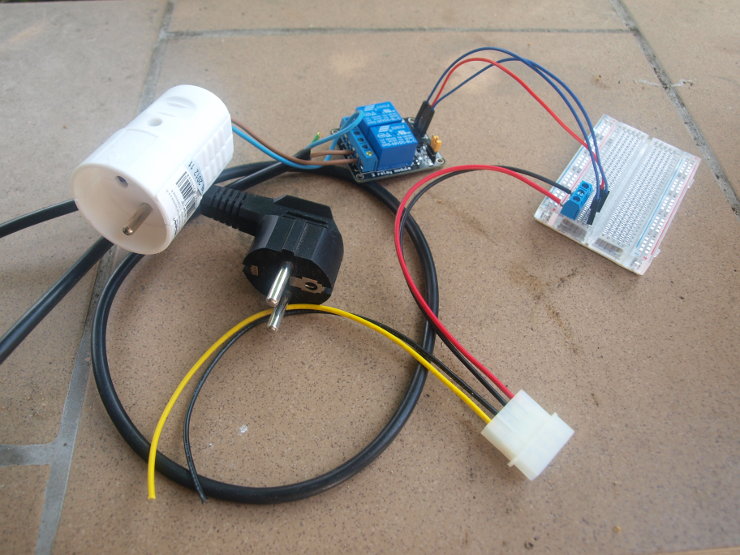I’ve recently made a hack that may be considered as one of the simplest hacks ever, yet for me it is the most effective one that I made so far.

I have a PC desktop computer with an ATX power adapter. As most of such computers, it’s quite noisy so I tend to keep it in sleep mode as much as possible. When I need it, I just press some key on the keyboard, wait couple of seconds while it restores and it’s ready for the work. When I’m done with it, I put it back to sleep.
Problem is, as most of such computers, it has some peripherals connected. This may be a monitor, a printer, a network switch, speakers and so on. All those peripherals have their own power and I can’t put them into sleep when computer is suspended. It may not be a good idea for all devices (my printer will clean itself from time to time when not used, my monitor can go to sleep when there is no video input, etc) but there is one device that is very annoying when powered - speakers.
Maybe it’s just me but I just can’t stand this quiet noise from the speakers when computer is off. Up until now, I manually turned off speaker’s power each time I suspended my computer and had to turn it on when I wanted to listen for the music. Even worse - I made my girlfriend to do the same even though the noise didn’t bother her. She complained about this solution and forgot to turn the speakers off quite often.
One day I decided I have to do something with this and instantly found a
solution. I had spare relay board around (so I didn’t even have to
solder anything) which I connected to the 5V in molex connector,
shorting VCC and IN1 signals and to the AC socket on the other side.
This way the relay is on when there is 5V on the connector and off when
there isn’t (when computer is off or suspended). Now I can connect
every device that should only be powered when computer is on to this AC
socket (the module can handle up to 10A so it’s quite a lot). I save
some energy and, what is more important, I can sleep without manually
turning speaker’s power off.
The only questions that remains - why I haven’t done this before and why ATX power supplies don’t have such thing by default?